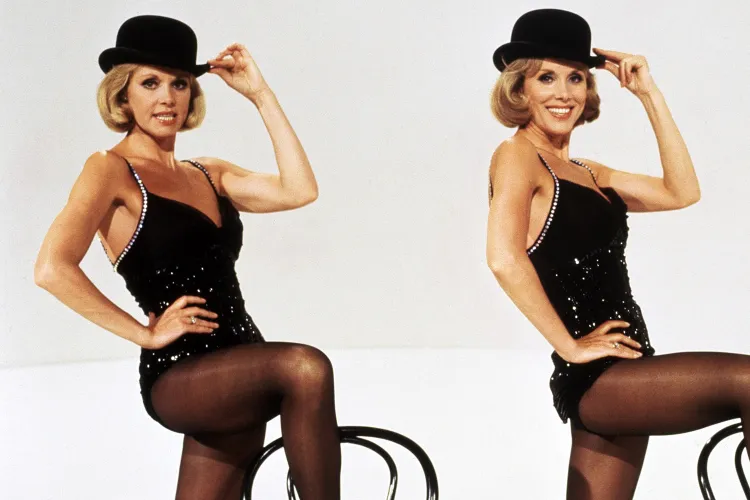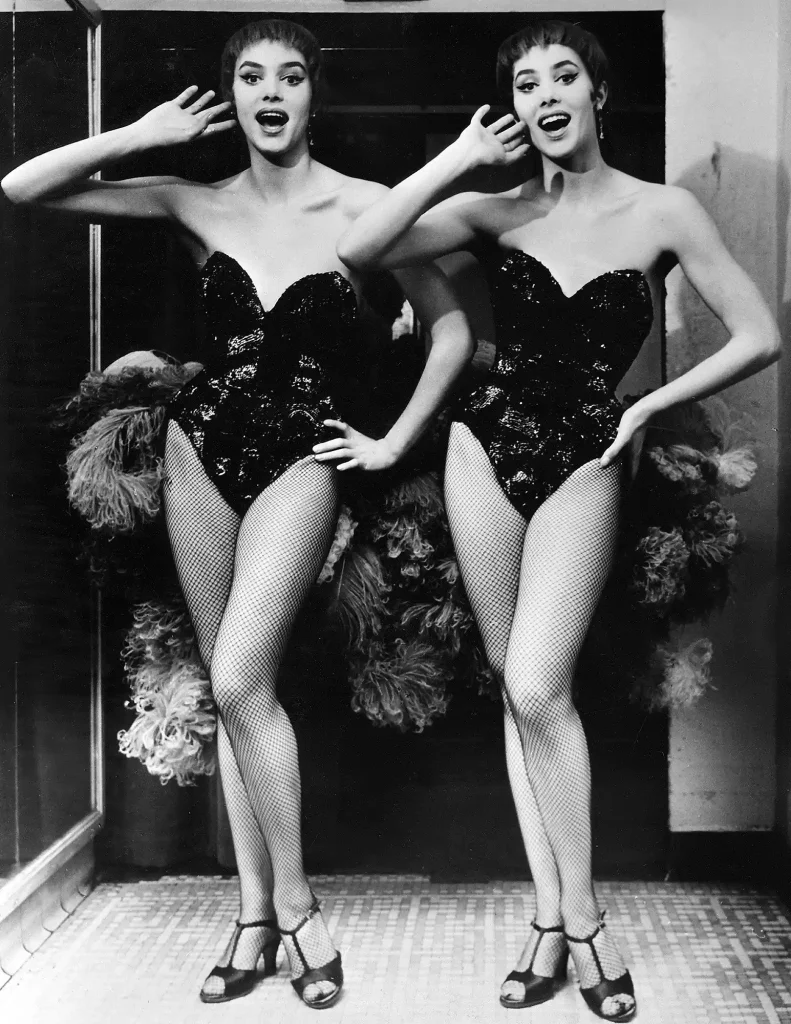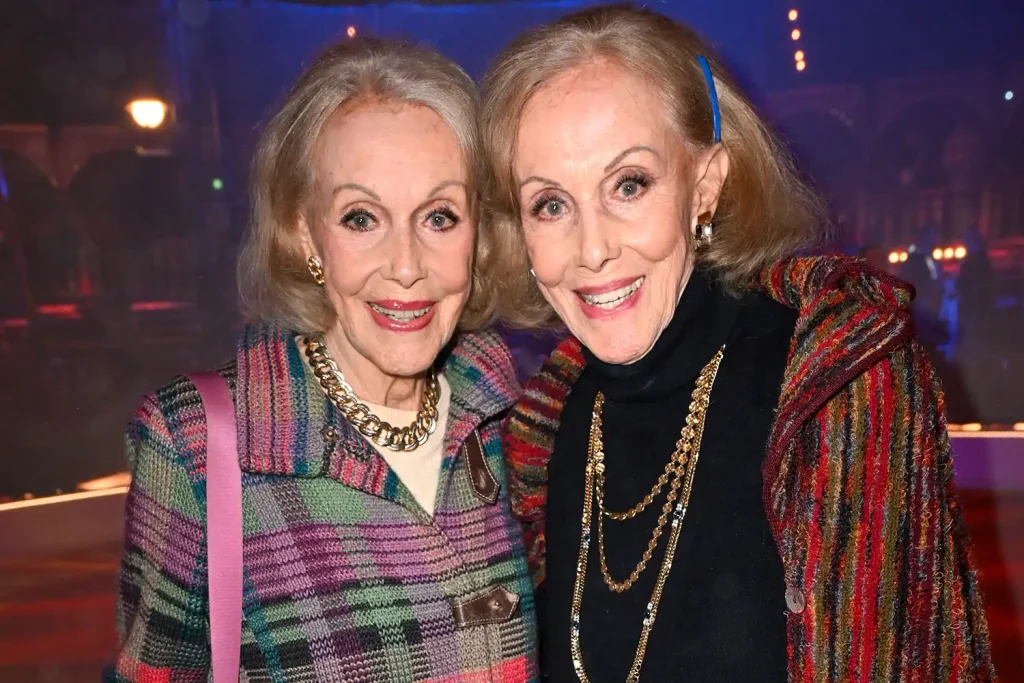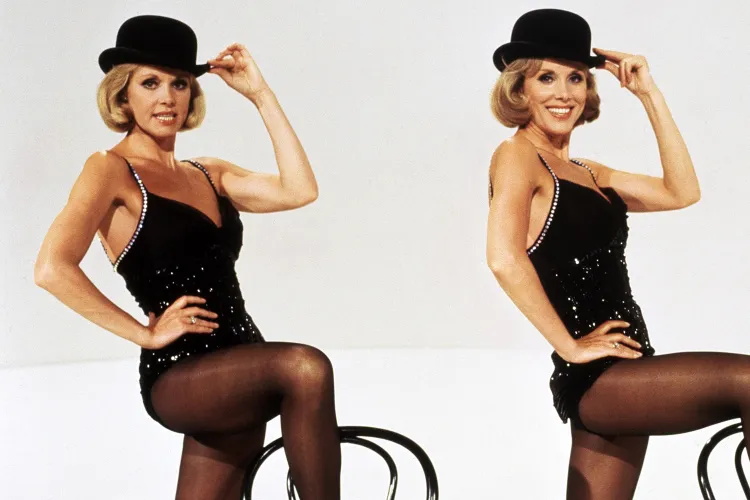Once the Most Famous Twins in Europe, the Kessler Sisters Chose to Leave This World Together — and Their Final Wish Has Left Fans Heartbroken
For nearly seventy years, the Kessler twins stood side by side under theater lights, in front of television cameras, and on the stages of Europe’s grandest performance halls. Their smiles were synchronized, their dance steps identical, and their bond unquestionable. Even when they were far from home, they were never far from each other. Now, in the most heartbreaking and deeply personal chapter of their shared life story, Alice and Ellen Kessler chose to leave the world the same way they once conquered it — together.

The news struck a strange emotional chord across Europe, especially among those old enough to remember the days when German television variety shows were incomplete without the glamorous Kessler twins performing in perfect choreography. They were, for their time, what modern audiences might call icons. Their fame stretched beyond Germany into France, Italy, and even the United States, where they appeared on legendary programs like The Ed Sullivan Show. With their statuesque figures, platinum-blonde hair, and polished precision, they were often described as the European answer to the American dancing duo, the Gabor sisters — except that the Kesslers could sing, dance, and speak five languages fluently. Their rise to stardom was not merely a product of beauty and charm; it was one of relentless discipline forged through trauma, survival, and a deep need for reinvention after war.

Born in 1936 in Saxony, Germany, the twins grew up under the shadow of World War II. Their earliest memories were not of glamorous gowns or film sets, but of air-raid sirens and ration lines. Their father, a steelworker, and their mother, a dressmaker, struggled to keep the family intact in a time when the world itself seemed fractured beyond repair. Whatever dreams their parents once had for their children vanished in the devastation of war. Yet even in those early years, the twins were inseparable — often dancing to distract themselves and their neighbors from the constant fear of bombs overhead.

By the time they were teenagers, the war was over, but their Germany was divided. In 1950, at just 14 years old, they gained acceptance into the Leipzig Opera Ballet. It might have been the beginning of a traditional career in the arts, except for one complication: Leipzig was in East Germany, under Soviet rule. The twins soon understood that their dreams would be limited by politics. So in a display of boldness far beyond their years, they fled to West Germany in 1952. That decision changed the course of their lives and placed them on the path toward international acclaim.
Their breakthrough came quickly once they reached the West. With their rare combination of natural charisma and professional-level discipline, they became household names in the 1950s and 1960s — a time when television variety shows were the pinnacle of family entertainment. They performed with orchestras, appeared in glamorous musical films, and became a favorite act at the storied Lido cabaret in Paris. In Germany, their faces were everywhere: magazines, posters, champagne advertisements. To many viewers, the Kesslers weren’t just performers — they were proof that German entertainment could sparkle again after the cultural darkness of the 1940s. Their success symbolized a kind of national healing.
They never married, though rumors followed them throughout their careers. Some tabloids claimed they were secretly engaged to foreign princes; others insisted they preferred to remain single to keep their careers unburdened. The truth, as they occasionally hinted in rare interviews, was that they already had the most complete relationship they needed: each other. They lived together for decades, owned adjoining homes, and remained in constant company even after retirement. Friends described their dynamic as “two halves of one soul.”
Even as they aged, they kept their dignity and humor about fame. In one interview, when asked why they still wore matching outfits, Ellen responded, “Because people would complain if we didn’t. They don’t want one Kessler; they want the Kesslers.” That sentence, light as it seemed, revealed the emotional truth behind their image: they were never meant to be singular.
When the news of their deaths broke, it was not met with the shock of tragedy, but with a solemn form of respect. The sisters were 88 years old and had reportedly planned their departure carefully. According to German reports, the Kesslers chose assisted suicide, which is legal in Switzerland under strict medical guidelines. The decision was not impulsive, nor was it the product of scandal or secrecy. It was, according to close sources, a final act of control — the same control they exerted over their performances, their public image, and their intertwined lives.
They left behind one final request: their ashes were to be placed in the same urn, alongside their beloved mother and their dog. To many outsiders, that might sound like a symbolic gesture. To their fans, it felt like the last perfect choreography — a final bow where neither sister stepped onto the stage alone.
In recent years, conversations around assisted death have become more nuanced, especially in Europe. Supporters argue that bodily autonomy and dignity should include the right to decide one’s final moment when life becomes fraught with pain or limitation. Critics fear that such decisions risk being influenced by depression, untreated illness, or social pressure. The Kesslers’ death sits at the intersection of that debate. Did they choose this path from clarity and control, or from exhaustion and fear of decline? No interview exists where they said they feared old age. Instead, they often spoke about the importance of elegance — a word that encompasses both their style and their philosophy.
What is undeniable is that they left on their own terms. They had lived lives of remarkable symmetry, and in the end, they protected that symmetry fiercely.
For fans, the grief is layered. There is sorrow for their passing, admiration for how strongly they wrote their own narrative, and nostalgia for a vanished era of entertainment. The Kesslers belonged to a time before social media, before constant surveillance of celebrity lives, before every emotional moment was dissected online. Their fame was built in smoky theaters and live broadcasts where mistakes could not be edited out. That authenticity made their perfection feel earned.
Tributes from across Europe have highlighted their grace, their discipline, and the rare emotional comfort they brought audiences recovering from the war. In Italy, where they once filmed musical comedies in the 1960s, newspapers described them as “the sisters who taught us to smile again.” In Germany, broadcast journalists replayed clips of their most famous television appearances — legs kicking in perfect unison, top hats tipped with the same elegant angle. On social media, younger viewers, seeing them for the first time, marveled at their charisma and wondered why they had never appeared in their history books. The answer is likely that the Kesslers represented joy, and joy is harder to archive than conflict.
If there is one theme that defines their legacy, it is loyalty. Loyalty to their craft, their audience, and above all, to each other. They understood that fame can fade and applause can dim, but love shared and protected is its own kind of immortality. Their story, including its ending, reflects that belief.
Those who knew them personally say the sisters were not afraid of death. More than once, they joked that if one went first, the other would be furious at having to perform alone. That joke, now painfully poetic, may have been more than humor — it may have been a promise.
Their urn will hold both of them, just as their life held both of them. Whatever one felt, the other understood. Whatever one experienced, the other shared. Their last act was not about escape. It was, in the simplest and most heartbreaking terms, about staying together.
Long after the lights of their era faded, the Kessler twins remained true to the rhythm they set for themselves. Their story is no longer just about music, costumes, and glamorous kicks. It is also about choice, dignity, and an unbreakable bond that not even death could separate.
In a world obsessed with individual branding, they remain a quiet reminder that some legends are built in pairs. And sometimes, the greatest love story is not romantic, but simply two lives lived — and ended — in perfect synchrony.



